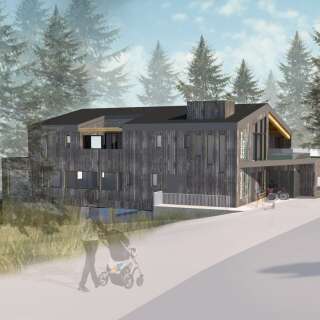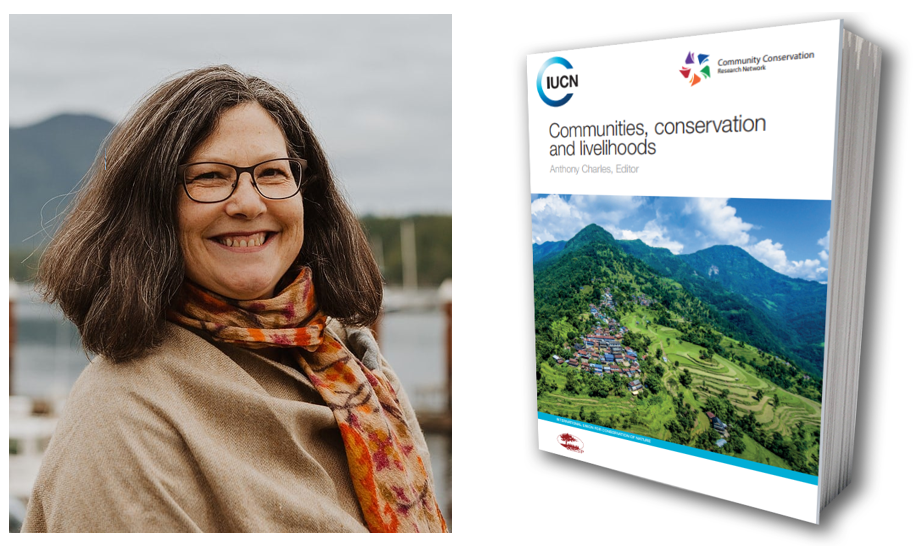Reflections on the book "Communities, Conservation and Livelihoods"
By Laura Loucks, PhD, Research Director
Since 2011, I’ve had the privilege of being a member of the Community Conservation Research Network, along with 30 colleagues from around the world who share the challenge of trying to create sustainable livelihoods while conserving the environment. Whenever we had the opportunity to be together and share stories, I consistently experienced the same feeling of instant connection and a deep understanding. We quickly found we had much in common in our struggles to change the rules that put more pressure on communities to resolve environmental challenges, with fewer financial assets and resources, while outside business interests typically had access to wealth, strong government support, and thereby more power to exploit resources unsustainably.
Under these conditions, many would consider the situation to be ‘intractable’, meaning nearly impossible to resolve. However, history repeatedly shows that communities find ways to overcome these situations. In many cases, local people find power in their cultural underpinnings which help to form a strong foundation for meaningful relationships to place and people. These relationships also build the necessary networks to help resist the downward pressure from outside forces and create innovative solutions with like-minded collaborators, in spite of the desperate odds.
The book Communities, Conservation and Livelihoods, edited byAnthony Charles, is an account of these community stories recently co-published by the Community Conservation Research Network and the IUCN Commission on Environmental, Economic and Social Policy (CEEP). When taken together, these community experiences demonstrate how each community in its own unique way has learned the value of working together when guided by shared conservation principles and partnerships for mobilizing support for local economic and ecological solutions.
Several chapters in the book highlight stories from this very special part of the world, the Nuu-chah-nulth territory. In Chapter 9: Indigenous Perspectives on Community Conservation, taaʔisumqa, Dawn Foxcroft from the Tseshaht Nation, describes her Nuu-chah-nulth lineage and her practice of ̓, ‘being witness, listening and learning from our Elders, Chiefs and knowledge holders.’ She reminds us that the concept of the ‘conservation ethic’ and the ideas of ‘no use’ and ‘no touch’ are western notions and can be problematic in their perpetuation of the myth of separation. Conversely, for Nuu-chah-nulth culture and for many indigenous peoples around the world, the principles of connection are fundamental for taking responsibility for ourselves, each other and the elements and beings all around us that support life itself. In the words of taaʔisumqa,
“Unlike a Western model, where the environment needs to be protected and kept away from people, Nuu-chah-nulth believe and practice hishukish ts’awalk(everything is one, everything is interconnected and nothing exists without the other),Isaak(respect with caring action) and uu-a-thluk (to take care of). These principles cannot be put into practice without an ongoing active relationship between us, the sky, land, water and all of the creatures in the environment. This deep relationship requires interaction, use and maintenance.”
In Chapter 7: Governance and Community Conservation, Tawney Lem from West Coast Aquatic and myself from Clayoquot Biosphere Trust, join a number of authors in describing four key lessons across the community stories that arise as common themes for successful governance:
- Multi-level collaboration and participant engagement;
- Access and management rights,
- Knowledge co-production; and
- Leadership and capacity building.
Learning processes that support dialogue, while being anchored in shared local values, are central for the success of two governance processes in Clayoquot Sound: 1) the Clayoquot Salmon Roundtable; and 2) the Clayoquot Biosphere Trust Governance Board. Conflicts have been known to arise in each of these governing bodies, and in both cases, the strong foundation in local values and Nuu-chah-nulth principles helped to re-orient the dialogue to discover shared solutions.
Social learning processes that invite our deeper understanding of one another and reveal our common connections, are integral for our ability to incorporate different views and integrate different types of knowledge. Leadership that models these types of learning processes and builds capacity to understand complex systems, are key for the necessary training to overcome conflicts, build trust, generate new knowledge and support innovation for livelihood diversification.
As an example of such a learning process, I author the final community story in the book which describes the series of events, cultural values and leadership strategies that resulted in the west coast learning initiative: the West Coast NEST –nature-education-sustainability-transformation. The vision of the NEST is “to enable all local community members and education oriented organizations to participate fully in the learning economy, together with visiting learners.” By linking learning with tourism, the West Coast NEST is creating a global network of learners who can help catalyze a new local economic opportunity, while shifting values toward sustainable livelihoods. While the West Coast NEST is now an initiative of the Clayoquot Biosphere Trust, the initial concept and underlying principles were developed collaboratively with local municipal governments and indigenous leadership. The seven principles are:
- Attract co-learners: we welcome others to learn with us;
- Community reciprocity: we share benefits between communities;
- Local knowledge holders are experts: local people are reimbursed for sharing their knowledge;
- Learning networks of practice: together, we are creating a culture of learning and collaborative problem solving.
- Stewardship-in-place: every community has an outdoor classroom and a place to learn from the land;
- Holistic hands-on learning: we learn best by applied learning and practice; and
- Cultural safety and sharing: we create safe spaces for learning and healing across cultural boundaries.
It’s earth day today, and it’s timely for successful community-based conservation and sustainable livelihoods to be highlighted and celebrated. If you’re interested in learning more, you can download the book for free here.




